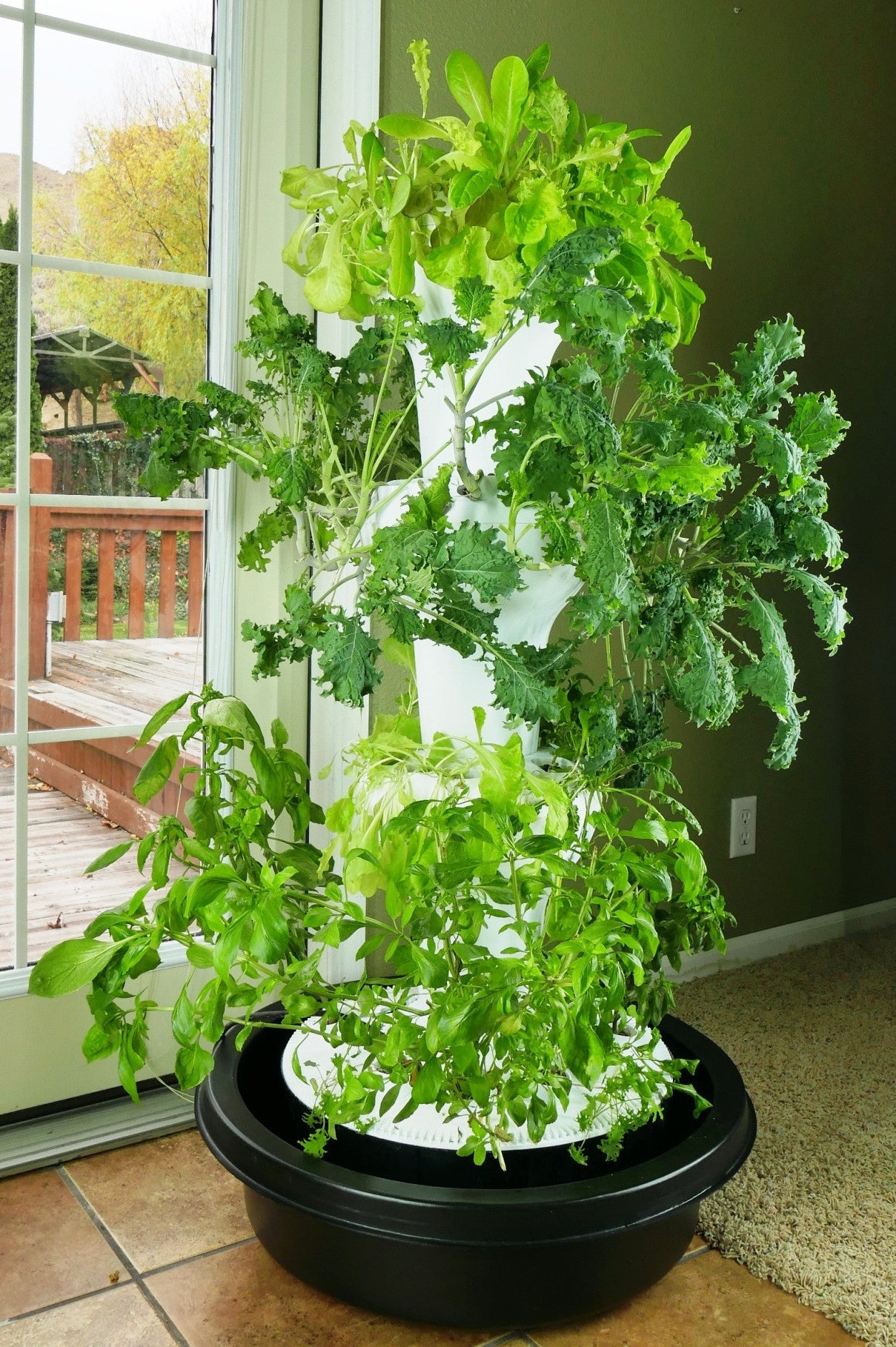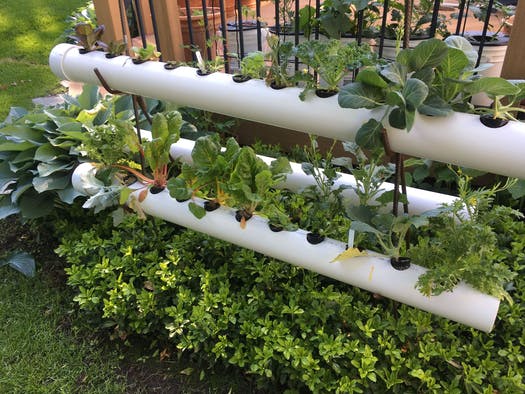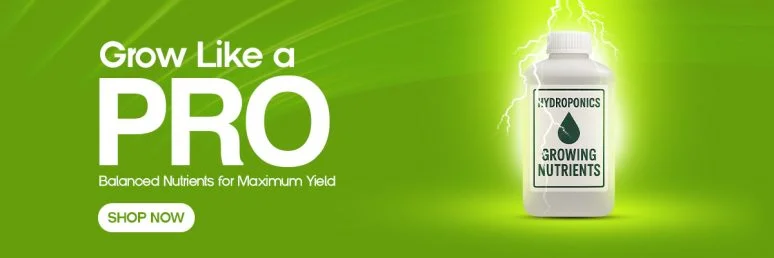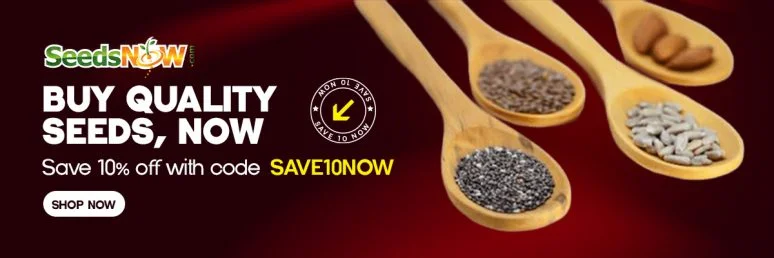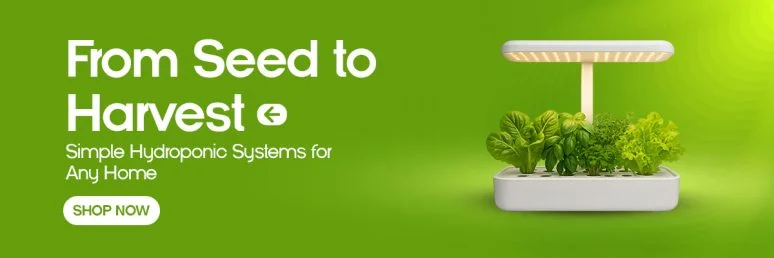What Are the Best Seeds for Hydroponics? Top Picks for Fast, Healthy Growth
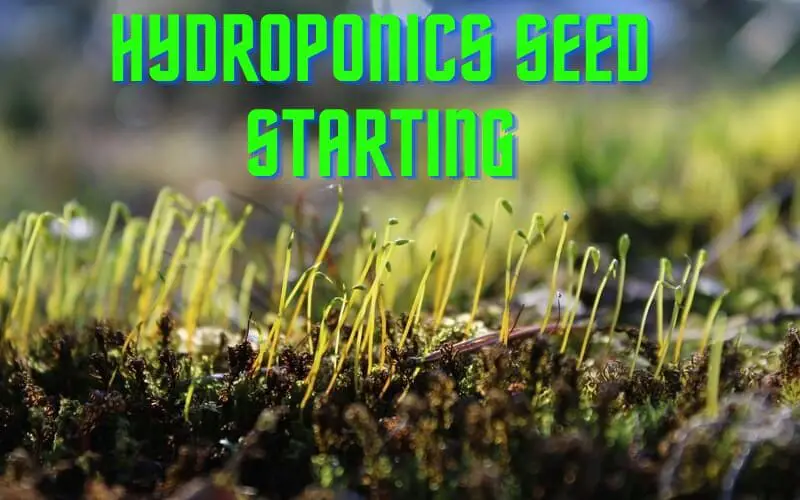
Key Takeaways
- Leafy greens like lettuce, spinach, and kale are ideal starter crops for hydroponic systems due to their rapid growth and high success rates.
- Herbs such as basil, cilantro, and mint thrive in hydroponic environments and can provide continuous harvests with proper pruning.
- While regular seeds can work in hydroponics, varieties specifically bred for indoor and hydroponic growing offer superior germination rates and disease resistance.
- Seed characteristics like germination speed, disease resistance, and plant size are crucial factors when selecting the best seeds for your hydroponic setup.
- Modern Farmer’s hydroponic seed selection guide can help you choose the perfect varieties for your specific system type and growing goals.
Success in hydroponic gardening starts with selecting the right seeds. Unlike traditional soil gardening, hydroponic systems require plants that can thrive in water-based environments with direct nutrient exposure. The best seeds for hydroponics combine high germination rates, disease resistance, and efficient nutrient uptake capabilities. Modern Farmer’s comprehensive hydroponic seed guide helps growers identify varieties specifically bred for water-based cultivation, ensuring your indoor garden starts with the strongest foundation possible.
When selecting hydroponic seeds, you’ll notice that some plants naturally adapt better to soilless environments than others. While nearly any plant can be grown hydroponically with the right setup, beginners will find the greatest success with varieties that have proven track records in water-based systems. These specially selected seeds provide faster growth cycles, higher yields, and more consistent results—critical advantages for both hobbyists and commercial growers.
Article at a Glance
This guide explores the best seed varieties for hydroponic systems, organized by plant category to help you select options that match your growing goals and experience level. We’ll cover everything from beginner-friendly leafy greens to more advanced fruiting plants, along with expert tips on germination techniques and common pitfalls to avoid. Whether you’re setting up your first small hydroponic system or expanding an established indoor garden, these seed recommendations will help maximize your growing success.
“The right seeds can make the difference between a thriving hydroponic garden and a frustrating experience. Plants bred specifically for hydroponics often demonstrate up to 25% faster growth rates and 15-30% higher yields compared to conventional varieties when grown in optimal conditions.” — Journal of Hydroponic Research
The secret to hydroponic success isn’t just about the system you use—it’s about starting with seeds genetically predisposed to thrive in water-based environments. Many modern seed varieties have been specifically developed for indoor growing conditions, including hydroponics. These seeds typically offer improved disease resistance, compact growth habits, and optimal nutrient absorption capabilities—all critical factors for successful soilless cultivation.
Why Seed Selection Makes or Breaks Your Hydroponic Garden
“Foody 12 Hydroponic System | Foody …” from foodyverticalgarden.com and used with no modifications.
Choosing the right seeds for your hydroponic system is perhaps the most crucial decision you’ll make as an indoor gardener. Unlike traditional soil gardening, where plants have some flexibility to adapt to less-than-ideal conditions, hydroponic systems create a more controlled environment that certain plant varieties are simply better suited for. The best hydroponic seeds germinate reliably, grow vigorously in water-based media, and efficiently utilize the precise nutrient solutions you provide.
Leafy Greens: The Perfect Hydroponic Starter Seeds
“Hydroponic Gardening | N.C. Cooperative …” from pender.ces.ncsu.edu and used with no modifications.
Leafy greens consistently rank as the top performers in hydroponic systems, making them ideal for beginners and commercial growers alike. Their rapid growth cycles, compact root structures, and high market value create the perfect combination for successful water-based cultivation. Most leafy greens can be harvested multiple times, providing continuous yields from a single planting. For these reasons, varieties of lettuce, spinach, kale, and other leafy greens form the backbone of most successful hydroponic operations.
Lettuce Varieties That Thrive Without Soil
Lettuce is the undisputed champion of hydroponic growing, with certain varieties specifically bred for water-based systems. Butterhead types like ‘Rex’ and ‘Buttercrunch’ develop beautifully in hydroponic setups, offering tender leaves and compact growth habits. For those preferring loose-leaf varieties, ‘Black Seeded Simpson’ and ‘Lollo Rossa’ provide excellent production with stunning visual appeal. The romaine variety ‘Parris Island Cos’ performs exceptionally well in nutrient film technique (NFT) and deep water culture (DWC) systems, developing crisp, upright growth perfect for harvesting.
When selecting lettuce seeds for hydroponics, look for varieties labeled as “bolt resistant” or “heat tolerant” to prevent premature flowering even under indoor growing lights. These specialized seeds often germinate in as little as 2-3 days and can be ready for harvest in just 30-45 days, allowing for multiple growing cycles throughout the year. Most hydroponic lettuce varieties also demonstrate excellent resistance to common pathogens like downy mildew and powdery mildew, critical advantages in the humid environment of indoor growing systems.
Spinach: Fast Growth and Continuous Harvests
Spinach thrives in hydroponic systems due to its efficient nutrient uptake and rapid leaf production. Varieties like ‘Melody’, ‘Space’, and ‘Tyee’ have been specifically developed for indoor cultivation, offering improved resistance to both heat and disease. These hydroponic-friendly spinach varieties typically reach harvestable size in just 25-30 days—significantly faster than their soil-grown counterparts. The compact growth habit of these varieties makes them ideal for stacked growing systems, maximizing production in limited spaces.
For best results with hydroponic spinach, select smooth-leaf varieties that are less likely to trap moisture between leaves, reducing disease pressure in humid indoor environments. Savoy-type spinach with crinkled leaves, while delicious, can sometimes develop fungal issues in hydroponic settings. Baby spinach harvested young (at 21-25 days) often provides the best flavor and texture when grown hydroponically, while also allowing for quicker crop rotation and higher annual yields per growing space.
Kale and Swiss Chard for Nutrient-Dense Crops
Kale varieties such as ‘Dwarf Blue Curled’ and ‘Red Russian’ excel in hydroponic systems, producing nutrient-dense leaves with minimal growing space. These compact varieties develop robust root systems that efficiently absorb nutrients from solution, leading to exceptional flavor and nutritional content. Most hydroponic kale reaches harvestable size in 30-40 days and continues producing for months with proper maintenance.
Swiss chard, with its vibrant stems and large, flavorful leaves, makes a colorful addition to any hydroponic garden. The ‘Bright Lights’ and ‘Fordhook Giant’ varieties perform exceptionally well in water-based systems, developing faster and cleaner than their soil-grown counterparts. Swiss chard is particularly valuable in hydroponics because it allows for continual harvesting—simply remove outer leaves while allowing the center to continue growing, providing months of production from a single planting.
Herb Seeds That Flourish in Hydroponic Systems
“Hydroponic Garden Tower and Hydroponics …” from gnhydroponic.en.made-in-china.com and used with no modifications.
Herbs represent some of the most profitable and satisfying crops for hydroponic cultivation. Their compact growth habits, intense flavor development, and high market value make them ideal candidates for indoor water-based growing. Many culinary herbs actually develop stronger aromatic oils when grown hydroponically with precisely controlled nutrients, resulting in superior flavor compared to soil-grown counterparts. From basil to oregano, herbs consistently rank among the most successful and rewarding hydroponic crops.
Basil: The Hydroponic Champion
Basil stands as the undisputed king of hydroponic herbs, thriving in virtually any water-based growing system. Genovese varieties like ‘Nufar’ and ‘Italian Large Leaf’ develop exceptionally well hydroponically, producing larger leaves and stronger stems than typically seen in soil cultivation. For smaller systems, compact varieties like ‘Spicy Globe’ and ‘Greek Dwarf’ provide excellent yields while maintaining a manageable size. With proper pruning techniques, a single hydroponic basil plant can produce continuous harvests for 4-6 months.
When selecting basil seeds for hydroponics, prioritize varieties with documented resistance to fusarium wilt and downy mildew, two common challenges in humid indoor environments. Seeds marketed specifically for greenhouse or hydroponic production typically germinate within 5-7 days and can produce their first harvest within 28-35 days of planting. For commercial growers, specialized basil varieties with extended shelf life characteristics, such as ‘Eleonora’ and ‘Prospera’, offer significant advantages for marketability.
Cilantro, Mint and Parsley: Quick-Growing Herbs
Cilantro varieties bred for slow-bolting characteristics, such as ‘Santo’ and ‘Leisure’, perform exceptionally well in hydroponic systems. These specialized seeds typically germinate within 7-10 days and provide harvestable leaves in just 3-4 weeks. Unlike soil cultivation, hydroponic cilantro stays cleaner, develops more tender stems, and maintains better flavor even as plants mature.
Mint thrives in hydroponic environments, often growing even more vigorously than in soil. Varieties like ‘Spearmint’ and ‘Peppermint’ develop extensive root systems that efficiently extract nutrients from solution, resulting in exceptionally flavorful leaves. Hydroponic mint typically begins producing harvestable leaves within 30 days of planting and continues vigorous growth for many months with proper pruning and system maintenance.
Parsley varieties such as ‘Giant of Italy’ and ‘Forest Green’ excel in hydroponic cultivation, developing deep green, flavorful leaves significantly faster than in soil. These varieties typically germinate in 14-21 days (slower than many herbs) but compensate with months of productive harvests once established. For best results, look for parsley seeds specifically selected for indoor growing, as these varieties often demonstrate better disease resistance and more compact growth habits suitable for stacked systems.
Oregano and Thyme: Compact Growers for Small Systems
Oregano and thyme represent ideal choices for smaller hydroponic systems due to their naturally compact growth habits and high flavor concentration. Greek oregano (Origanum vulgare hirtum) and English thyme (Thymus vulgaris) varieties consistently outperform other types in water-based systems. These Mediterranean herbs actually develop stronger essential oil content when grown with carefully controlled nutrient delivery, often resulting in more potent flavor than soil-grown plants.
Best Fruiting Plants for Hydroponic Gardens
“Basic Hydroponic Garden …” from www.saferbrand.com and used with no modifications.
While fruiting plants require more advanced hydroponic setups than leafy greens and herbs, they offer exceptionally rewarding harvests for indoor gardeners. The key to success with hydroponic fruiting crops lies in selecting varieties specifically developed for indoor conditions. These specialized seeds produce plants with more compact growth habits, improved pollination characteristics, and better adaptation to artificial lighting conditions. For beginners transitioning to fruiting crops, cherry tomatoes and compact pepper varieties offer the highest chance of success.
Cherry Tomatoes: Compact Varieties for Indoor Success
Cherry tomato varieties like ‘Red Robin’, ‘Tiny Tim’, and ‘Micro Tom’ have been specifically developed for indoor and container growing, making them ideal candidates for hydroponic systems. These determinate and dwarf indeterminate varieties typically reach only 12-24 inches in height while still producing impressive yields of flavorful fruits. When selecting tomato seeds for hydroponics, focus on varieties labeled as disease-resistant (particularly to fusarium wilt and powdery mildew) and those developed specifically for greenhouse conditions.
For hydroponic tomatoes, specialized “greenhouse varieties” often outperform standard garden types due to their improved pollination capabilities under indoor conditions. Varieties like ‘Totem’, ‘Tumbler’, and ‘Patio Princess’ often produce fruits within 60-70 days of planting and continue bearing for several months. Many commercial hydroponic growers prefer varieties with extended shelf life characteristics, such as ‘Sweet Million’ and ‘Sun Gold’, which maintain quality for days after harvesting.
Proper Germination Techniques for Different Seed Types
Successful hydroponic growing begins with proper seed germination, which varies significantly across plant varieties. Larger seeds like tomatoes and peppers benefit from pre-soaking for 12-24 hours before placement in growing media. Smaller seeds such as lettuce and herbs should be gently pressed into a moist starter medium like rockwool cubes, coco coir plugs, or specialized seed-starting foam. Maintain temperature between 70-80°F (21-27°C) and humidity levels at 80-90% during this critical stage to maximize germination rates.
Transferring Seedlings to Your Hydroponic System
Timing is critical when transferring seedlings to your primary hydroponic system. Wait until seedlings develop their first true leaves (not the initial seed leaves or cotyledons) and a robust root system that extends at least an inch below the growing medium. For most plants, this occurs 10-14 days after germination. When transferring, handle seedlings by their growing medium rather than stems or leaves to prevent damage. Place them carefully into your hydroponic system, ensuring roots have direct access to nutrient solution while keeping the stem and crown above the water line to prevent rotting.
Seasonal Planning for Year-Round Harvests
“How to Build Your Own Hydroponic Garden …” from www.greenwaybiotech.com and used with no modifications.
One of hydroponics’ greatest advantages is the ability to grow year-round regardless of outdoor conditions. However, even indoor environments experience seasonal fluctuations in ambient temperature, humidity, and natural light penetration that can affect plant performance. Strategic planning around these subtle seasonal changes allows you to optimize production throughout the year. By selecting appropriate crop varieties for each season and staggering plantings every 2-3 weeks, you can maintain continuous harvests without gaps in production.
Creating a detailed growing calendar is essential for year-round hydroponic success. Document germination dates, transplant times, first harvest dates, and total production cycles for each crop to refine your growing strategy over time. Many experienced hydroponic gardeners maintain detailed growing journals that track not just planting schedules but also nutrient solution parameters, environmental conditions, and yield data to continually improve their results with each growing cycle.
Warm-Season vs. Cool-Season Crops
Even in climate-controlled indoor environments, plants retain their natural preferences for either warm or cool growing conditions. Cool-season crops like lettuce, spinach, kale, and cilantro perform best when ambient temperatures remain between 60-75°F (15-24°C) and nutrient solution temperatures stay around 65-68°F (18-20°C). These plants often struggle and develop bitter flavors when temperatures consistently exceed these ranges. Conversely, warm-season crops like tomatoes, peppers, cucumbers, and basil thrive when ambient temperatures range from 70-85°F (21-29°C) with nutrient solution temperatures around 70-75°F (21-24°C).
Creating Perpetual Harvest Schedules
Perpetual harvesting—the practice of staggered planting and continuous collection—represents the pinnacle of hydroponic efficiency. Rather than harvesting an entire crop at once, this approach maintains plants at various growth stages within the same system. For example, a 36-site lettuce system might have 12 plants nearing harvest, 12 at mid-growth stage, and 12 recently transplanted seedlings. Every 7-10 days, you harvest the mature plants, move each group forward in the system, and introduce new seedlings to the vacated spots. This rotation ensures weekly harvests indefinitely, maximizing the productivity of your hydroponic investment.
Get Growing: Your Action Plan for Hydroponic Success
- Start with beginner-friendly crops like lettuce, herbs, and leafy greens before attempting more challenging fruiting plants
- Invest in high-quality seeds specifically bred for hydroponic or greenhouse environments
- Maintain detailed records of germination rates, growth cycles, and yields to refine your techniques
- Implement proper sanitation practices to prevent disease spread in your hydroponic system
- Establish a perpetual harvesting schedule with staggered plantings every 7-14 days
Your hydroponic journey begins with a single seed but flourishes through consistent application of proven techniques. Start small with a manageable system focused on reliable crops like lettuce and herbs. As you gain experience, gradually expand both your system and your crop diversity. Remember that environmental control—particularly temperature, humidity, and light intensity—often determines success more than any other factor in hydroponic cultivation.
Maintaining proper nutrient solution parameters represents another critical aspect of successful hydroponic growing. Different seeds and plants require specific electrical conductivity (EC) and pH levels at various growth stages. Generally, seedlings and young plants prefer lower EC levels (1.0-1.2 mS/cm) while mature plants, especially fruiting varieties, require higher concentrations (1.8-2.4 mS/cm). Regular monitoring and adjustment of these parameters dramatically improves germination rates, growth speed, and overall plant health.
Finally, don’t underestimate the importance of proper lighting for seed germination and plant development. While many seeds germinate in darkness, they require specific light intensities and spectrums immediately upon emergence. For leafy greens and herbs, provide 200-400 μmol/m²/s of photosynthetically active radiation (PAR), while fruiting crops need 400-600 μmol/m²/s or higher. Modern LED grow lights with customizable spectrums offer the precise light recipes each plant variety needs throughout its growth cycle.
Frequently Asked Questions
Hydroponic seed selection raises many questions, especially for beginners transitioning from soil gardening. These frequently asked questions address the most common concerns about selecting and starting seeds for water-based growing systems.
Do I need special seeds for hydroponics or will regular seeds work?
Regular garden seeds will grow in hydroponic systems, but varieties specifically bred for hydroponics or greenhouse cultivation typically perform better. These specialized seeds offer improved germination rates in soilless media, more efficient nutrient uptake, better disease resistance for humid environments, and growth habits optimized for indoor conditions. While you can experiment with standard garden seeds, investing in hydroponic-specific varieties significantly increases your chances of success, particularly for more challenging crops like tomatoes and peppers.
What are the fastest growing seeds for hydroponic systems?
Leafy greens and herbs consistently rank as the fastest-growing hydroponic crops. Lettuce varieties like ‘Black Seeded Simpson’ and ‘Butter Crunch’ often reach harvestable size in just 30-35 days from seed. Spinach, arugula, and mustard greens can be harvested even faster, sometimes within 21-28 days of germination. Among herbs, basil, cilantro, and dill demonstrate particularly rapid growth in hydroponic environments, often ready for first harvest within 28-35 days of planting.
For those seeking ultra-fast production, microgreens represent the quickest path to harvest in hydroponic systems. Crops like sunflower, pea shoots, radish, and buckwheat microgreens typically reach harvestable stage in just 7-14 days from planting. These nutrient-dense crops require minimal growing space and simplified hydroponic setups, making them ideal for beginners and commercial growers focused on quick turnover. For more details on the best options, check out this guide on hydroponic seeds.
How many seeds should I plant per growing site?
For most hydroponic crops, plant 2-3 seeds per growing site, then thin to the strongest seedling once germination occurs. Medium to large seeds like tomatoes, peppers, and cucumbers should be limited to 1-2 per site due to their substantial space requirements. For very small seeds like lettuce and herbs, you may plant 3-5 per site initially, as their germination rates can be more variable. Commercial growers often use pelleted seeds (coated with clay for easier handling) which allows precise placement of exactly one seed per growing site, minimizing the need for thinning.
Can I save seeds from my hydroponic plants for future growing?
You can save seeds from open-pollinated hydroponic plants, but the process requires additional steps compared to soil growing. Hydroponic plants must be allowed to complete their full life cycle, including flowering and seed production—phases many hydroponic growers typically avoid. For successful seed saving, transition flowering plants to lower nutrient concentrations during the seed development phase and ensure proper pollination occurs (either manually or with air movement for self-pollinating varieties).
Be aware that many commercial hydroponic seed varieties are hybrids (F1), which won’t produce offspring with the same characteristics as the parent plants. Additionally, the controlled environment of hydroponics sometimes reduces the natural stressors that trigger robust seed production in plants. For these reasons, while seed saving is possible, many serious hydroponic growers prefer purchasing fresh, specialized seeds for each growing cycle to ensure consistent results.
- Only save seeds from open-pollinated (non-hybrid) varieties
- Allow plants to fully mature beyond the normal harvest stage
- Reduce nutrient strength during seed development
- Ensure proper pollination occurs (hand pollination may be necessary)
- Thoroughly dry and properly store collected seeds in cool, dark conditions
When collecting seeds from hydroponic plants, prioritize those that performed exceptionally well in your specific system and environmental conditions. This selective approach gradually develops regionally adapted seed stock particularly suited to indoor growing. Some hydroponic gardeners maintain prized seed lines developed over many growing cycles that outperform commercial varieties in their specific setups.
What’s the average germination time for hydroponic seeds?
Germination times vary widely among hydroponic crops, ranging from 2-14 days under optimal conditions. Lettuce, basil, and most brassicas (kale, cabbage, etc.) typically germinate within 2-5 days when kept at ideal temperatures of 70-75°F (21-24°C). Slower germinators include parsley, celery, and peppers, which may take 10-14 days even under perfect conditions. Tomatoes usually fall in the middle range, emerging in 5-8 days when properly maintained.
Environmental factors dramatically impact germination times. Temperature fluctuations, improper moisture levels, or using old seeds can double or triple the expected emergence period. For most consistent results, use a dedicated germination chamber or heat mat that maintains precise temperatures, and monitor humidity levels carefully. Some commercial growers use hydrogen peroxide solutions (3% concentration) as a pre-soak to improve germination rates and speed emergence by 1-2 days for many crop varieties.
Pre-sprouting techniques can significantly accelerate the germination process for many hydroponic crops. The paper towel method—placing seeds between moistened paper towels inside a sealed container—allows you to germinate seeds before placing them in growing media. This approach not only speeds up the overall growing cycle but also ensures you’re only transplanting viable seeds, maximizing the efficiency of your hydroponic system.
For the most reliable results, always check seed packets for specific germination instructions, as requirements can vary even between different varieties of the same crop. Modern Farmer’s hydroponic specialists recommend investing in fresh seeds each growing season from reputable suppliers who specialize in hydroponic varieties for consistent, predictable germination times and healthy seedling development.
